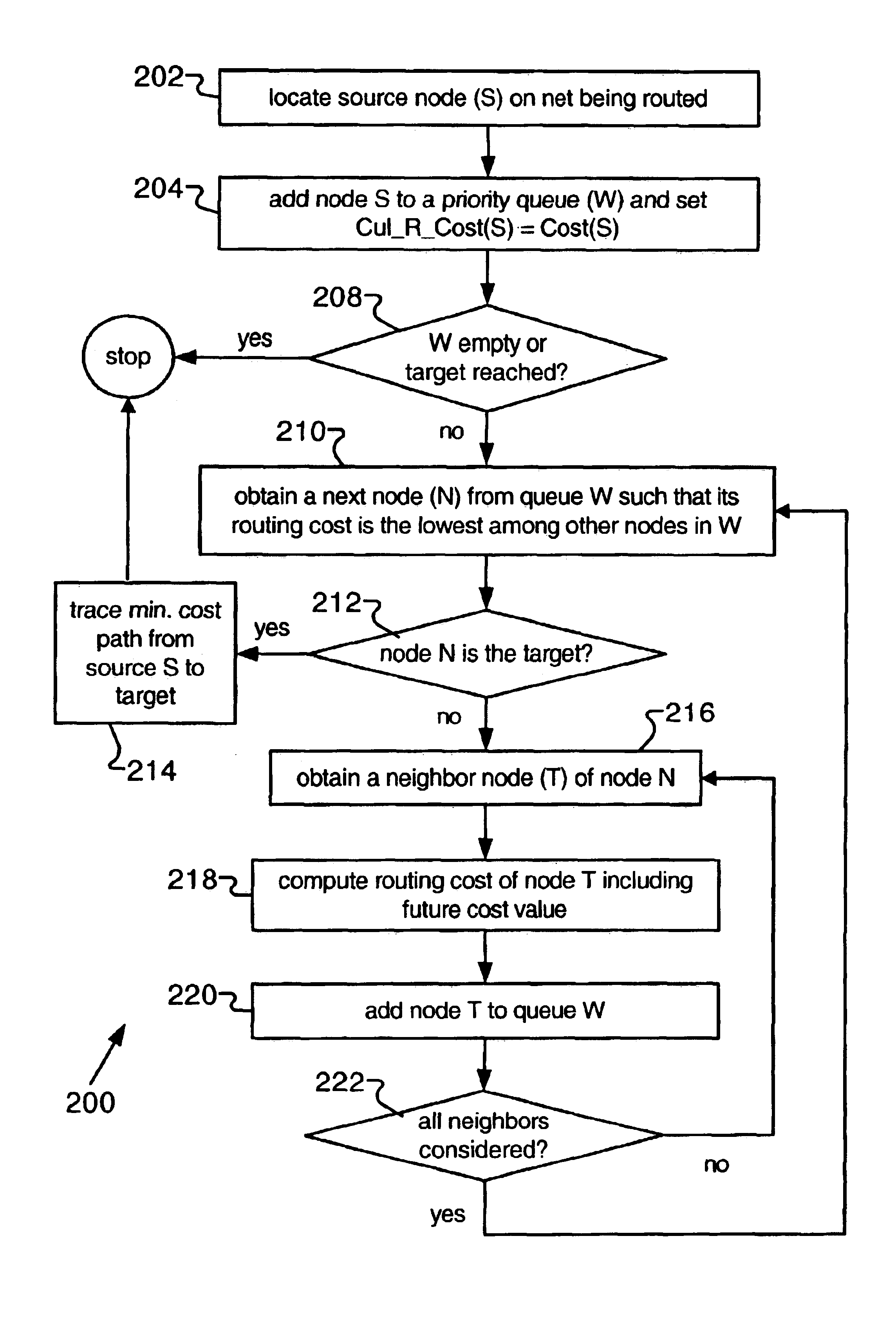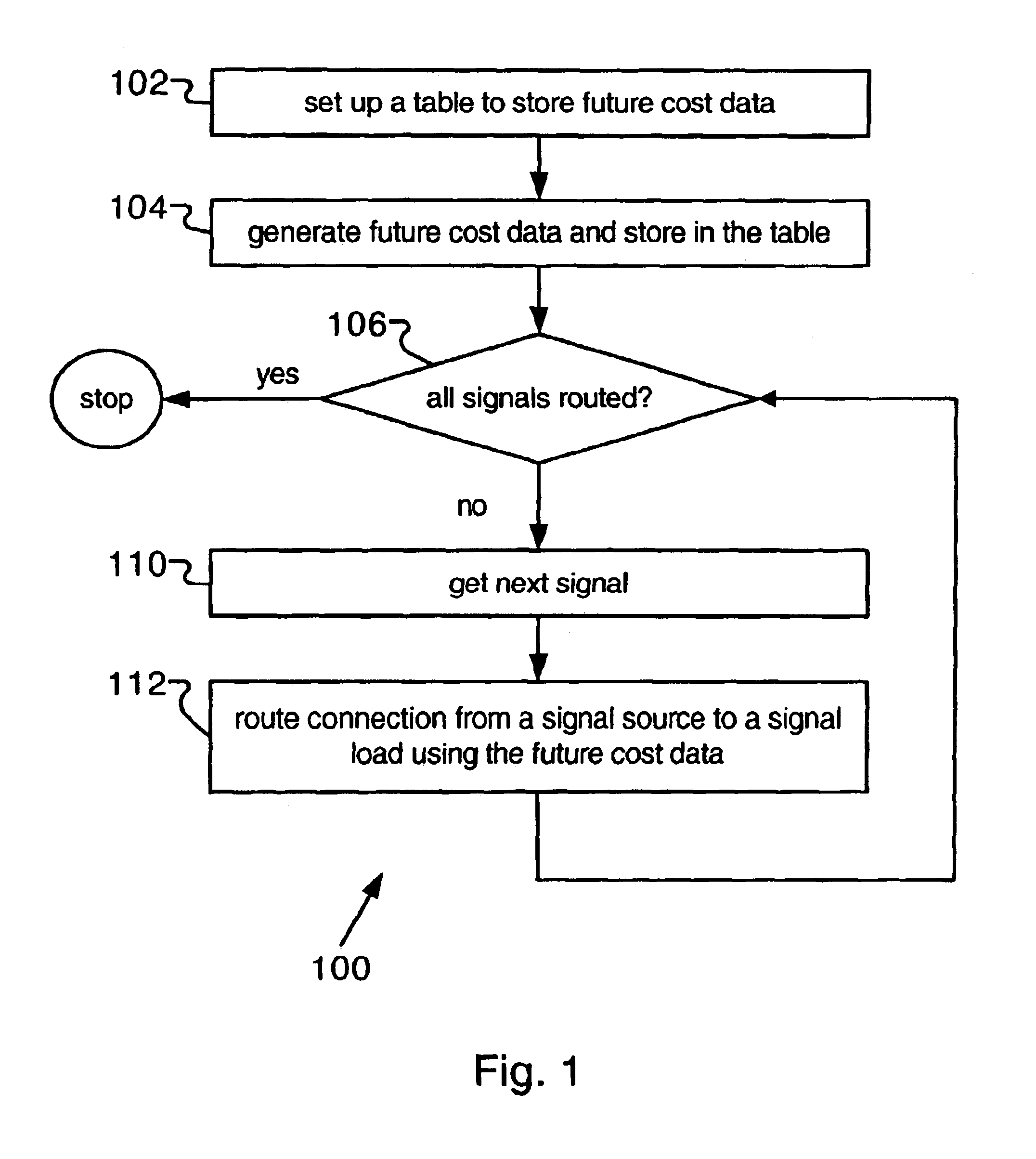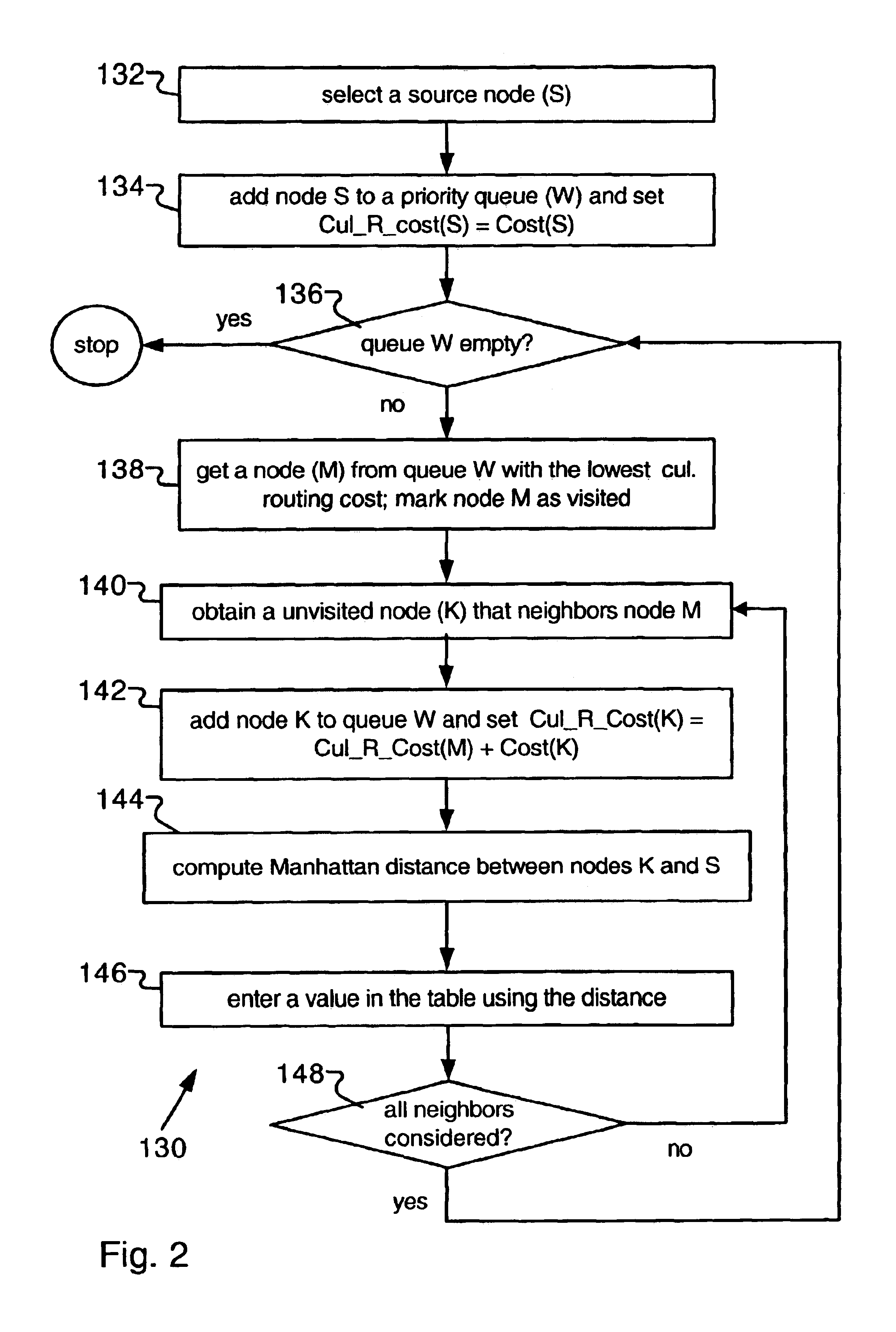Method for computing and using future costing data in signal routing
a signal routing and future costing technology, applied in the field of programmatic logic devices, can solve the problems of remaining future cost of existing systems, and achieve the effect of reducing the run-time needed and improving the run-tim
- Summary
- Abstract
- Description
- Claims
- Application Information
AI Technical Summary
Benefits of technology
Problems solved by technology
Method used
Image
Examples
Embodiment Construction
The present invention relates to a new method for routing signals, In the following description, numerous specific details are set forth in order to provide a more thorough understanding of the present invention. However, it will be apparent to one skilled in the art that the present invention may be practiced without these specific details. In other instances, well-known features have not been described in detail in order to avoid obscuring the present invention.
A widely used algorithm used for routing signals in PLD devices is a variant form of the well-known maze router, as described in C. Y. Lee, “An Algorithm for Path Connections and its Applications,” in IRE Trans. on Electronic Computers, Vol. EC=10, 1961, pp. 346-365. This technique is general and adapts very well to some PLD interconnect architectures, such as the FPGA routing fabric. From the router's perspective, the integrated circuit interconnect as modeled by a “routing graph”, containing a set of nodes and directed ed...
PUM
 Login to View More
Login to View More Abstract
Description
Claims
Application Information
 Login to View More
Login to View More - R&D
- Intellectual Property
- Life Sciences
- Materials
- Tech Scout
- Unparalleled Data Quality
- Higher Quality Content
- 60% Fewer Hallucinations
Browse by: Latest US Patents, China's latest patents, Technical Efficacy Thesaurus, Application Domain, Technology Topic, Popular Technical Reports.
© 2025 PatSnap. All rights reserved.Legal|Privacy policy|Modern Slavery Act Transparency Statement|Sitemap|About US| Contact US: help@patsnap.com



